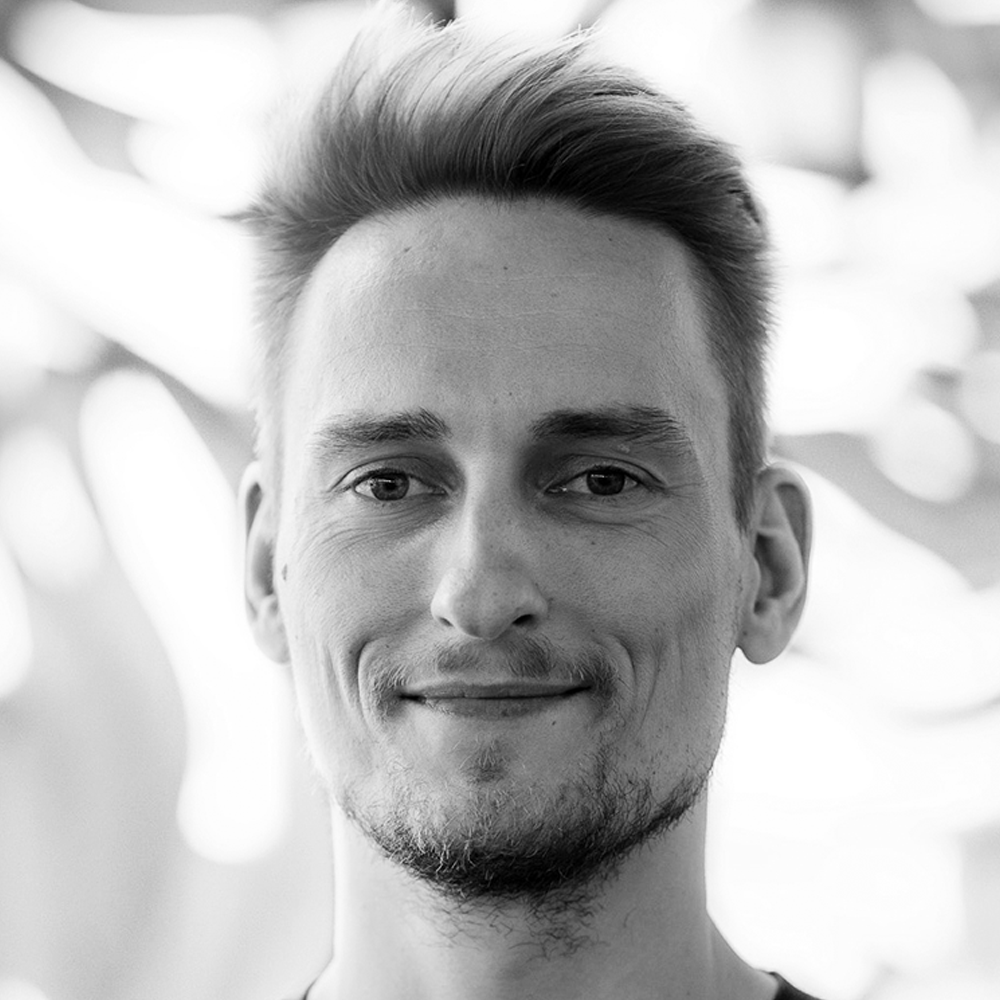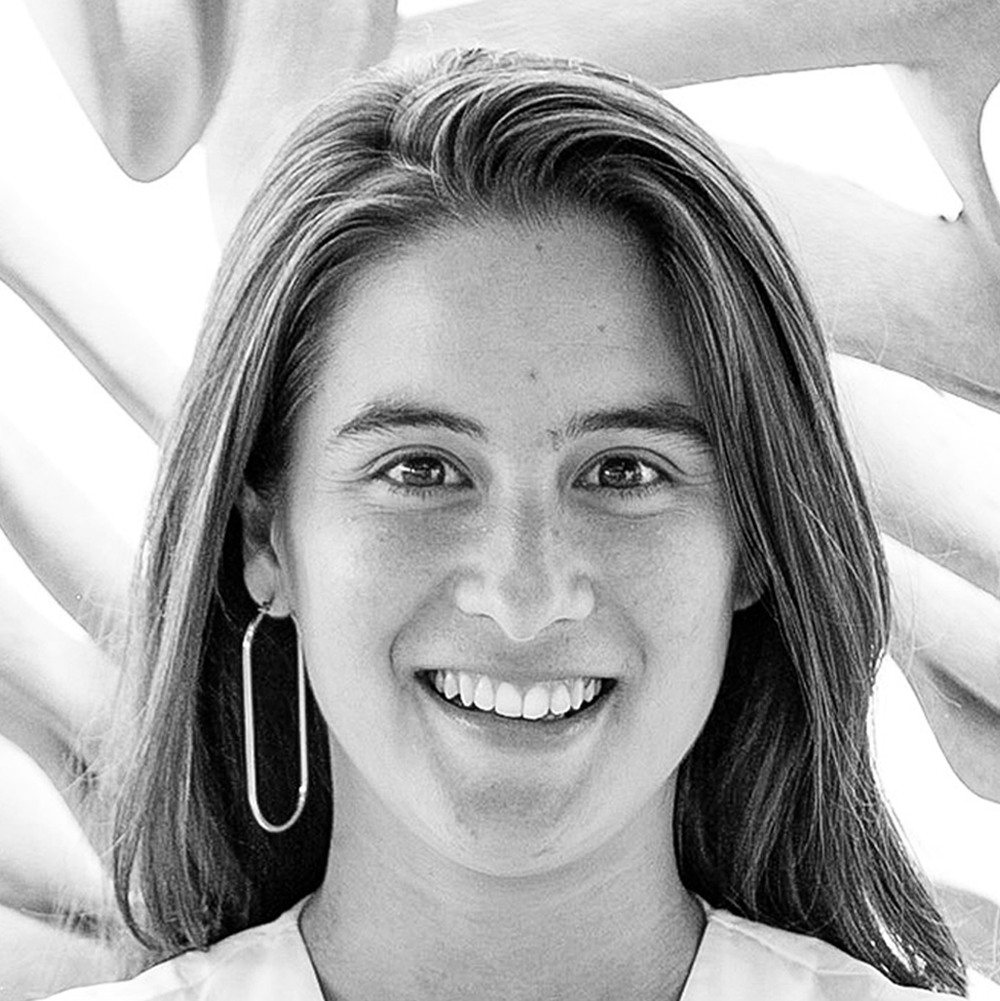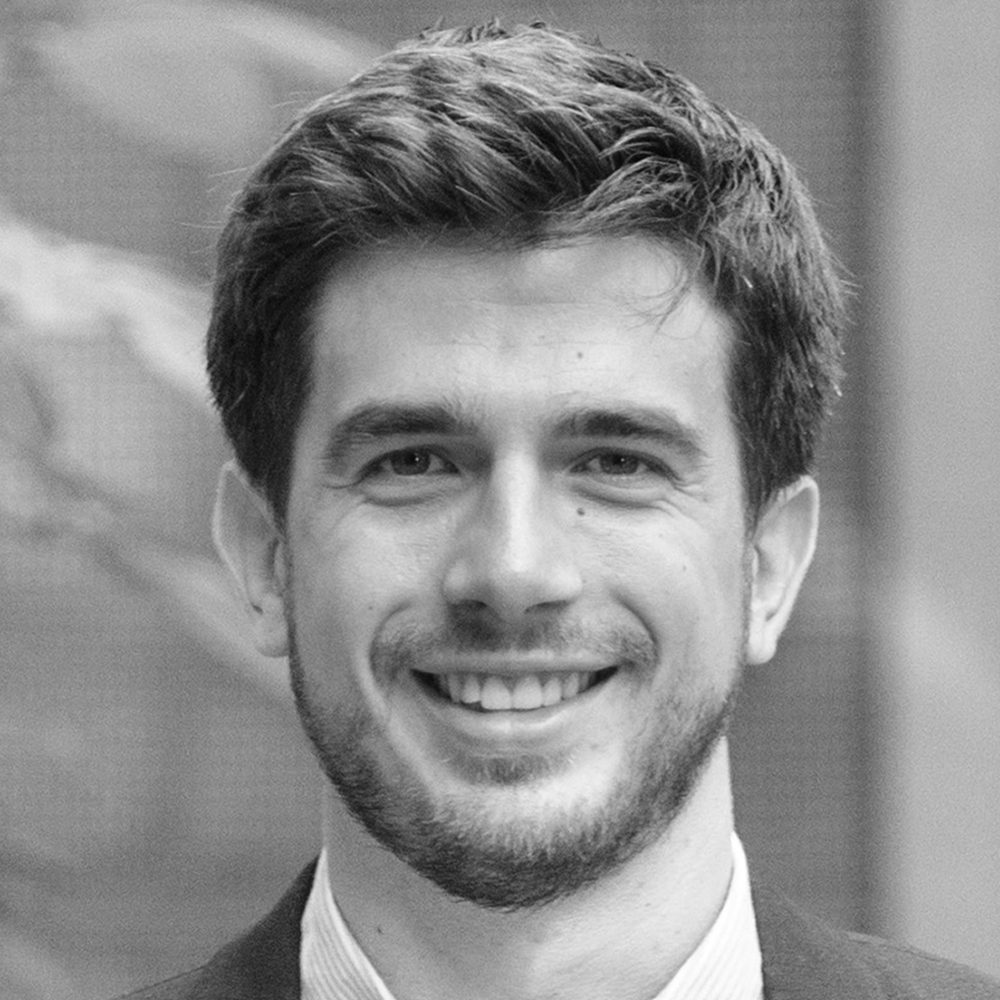Session 3B – Robotics and Digital Fabrication
Tuesday 30 March, 14:00 – 15:30 // Session Chair: Dagmar Reinhardt
067 – Robotic Color Grading for Glass: Additive Manufacturing of Heterogeneous Color and Transparency
Tuesday 30 March, 14:00, Session 3B
Sophia Michopoulou, Master of Advanced Studies ETH in Architecture and Digital Fabrication
Rena Giesecke, Digital Building Technologies, Institute for Technology in Architecture, ETH Zurich
Jonas Ward Van den Bulcke, Master of Advanced Studies ETH in Architecture and Digital Fabrication
Pietro Odaglia, Digital Building Technologies, Institute for Technology in Architecture, ETH Zurich
Benjamin Dillenburger, Digital Building Technologies, Institute for Technology in Architecture, ETH Zurich
This paper presents a new additive manufacturing method for color grading of glass. Color-graded elements, ranging from product design to architectural scale, could filter light and view in a novel way through locally differentiated color and opacity, and produce color effects in space. Existing methods for manufacturing multi-colored glass are either not economic for building due to labor intensity, limited to surface applications or small scale objects made of resins or plastics. To allow for automated color grading of glass in two-and-a-half and three dimensions we propose a robotic multi-channel process. The multi-channel tool mounted on a Universal Robot consists of four compartments, containing red, yellow, blue and transparent glass granules. Colors can be mixed on the fly by implementing varying flow rate ratios along the print path. Loose granules are fused in a kiln at high temperature into color-graded glass elements. The goal of this research is to lay the basis for color-graded elements of larger size and volume with higher pattern differentiation for functional and aesthetic purposes.

Sophia Michopoulou received her Diploma in Architecture from NTUA Athens and she also studied in UNIFI Florence. She gained her professional experience in Kengo Kuma (Tokyo, Japan), EDSA Plan (Florida, US), Serrano and Baquero (Granada, Spain). In 2019 she received her master in Architecture and Digital Fabrication from ETH Zurich where she explored new design ways starting from a small fabrication scale implementing new materials and building techniques to large scale architecture elements. Her experiences shaped her perception of creation and she focuses on designing the building process as well as constructing new design tools as a freelancer in Athens.
Rena Giesecke is an Architect, PhD Researcher and ITA Fellow at Digital Building Technologies at ETH Zurich. Rena studied architecture in Germany, Japan and Austria. Her research and teaching activities evolve around rethinking craft and construction through the lense of new technologies. Embedded in the history of architecture and material culture, she creatively formulates technological visions of architecture. In her doctoral research, she builds a body of work on the topic of Digital Glass and addresses the question how digital fabrication could potentially redefine the architecture of the window as a locally differentiated filter for information through color and form.

Jonas Ward is an explorer of patterns, both conceptual and aesthetic. His work primarily deals with generating analysis and design tools using ongoing developments in the realm of computer science and additive manufacturing, to find purpose and solutions for “the baggage of the past”. Because of the strong focus on contextualization, ecology, history and cultural heritage are recurring themes. Design is not only creating but also reusing. Besides his work and collaborations with various artists, Jonas also works with UGD on developing various design workflows using machine learning, genetic algorithms topological optimization for improving the qualities of built environments.

Pietro Odaglia is a doctoral student at the chair of Digital Building Technologies. He holds a master degree in Architecture and Building Engineering (Università degli Studi di Genova) and a master of advanced studies in Architecture and Digital Fabrication (ETH Zurich). His research develops at the intersection between architecture, process engineering and material science and focuses on the applicability of additive manufacturing techniques for construction purposes. In the past years, he and his team have been developing a 3d printing system able to exploit the advantages of an inorganic, geopolymer binder for the use of recycled material sources.

Architect Benjamin Dillenburger is Professor for Digital Building Technologies at the Institute of Technology In Architecture at the Department of Architecture, ETH Zurich. His research focuses on the development of building technologies based on the interplay of computational design methods, digital fabrication and new materials. He searches for ways to exploit the potential of additive manufacturing for building construction. Previously he was appointed Assistant Professor at the John H. Daniels Faculty of Architecture, Landscape and Design at the University of Toronto, and worked as senior lecturer in the CAAD group at Swiss Federal Institute of Technology’s architecture department Zurich.
083 – Robotic Weaving of Customizable FRP Formworks for Large-Scale Optimized Structure
Tuesday 30 March, 14:15, Session 3B
ZHU Guanqi, The University of Queensland
OU Ya, School of Civil Engineering, Central South University of Forestry and Technology
BAO Dingwen, School of Architecture and Urban Design, RMIT University
LUO Dan, The University of Queensland
This research presents a novel method of robotic fabrication for customizable fiber-reinforced polymer (FRP) tubular formworks, which also function as reinforcements for large-scale structural components. This process is achieved by the spatial weaving of FRP fabric driven by a robotic arm, and calibrated with the fast-cure resin which is applied on the fabric and cures during the weaving process so the fabricated structure is self-supporting and the structure is formed in an additive manner. With this method, structural members with changing sections can be customized and fabricated rapidly with off-the-shelf materials, following a system of structural reinforcement that has been widely adopted in the construction industry and promotes new applications of construction robotics.

Guanqi is an Ph.D. Candidate and his research field includes material computation, digital design and robotic construction. Also, he is an active architect who is pursuing for the combination between the traditional architectural design methodology and the new construction technologies and computational design. He has participated in a number of research projects including architecture design and digital fabrication with design institutes or studios, specializing in solving practical problems incorporated into algorithm and mathematics logicism. In his subsequent architectural research projects, using processing, python, programming became an essential part in his practical research projects.

Dr. Ya Ou is a lecturer in Central South University of Forestry and Technology. She received her PhD degree in civil engineering from University of Queensland in 2020. Her research interests include timber-concrete composite structure, advanced building materials, and digital fabrication.

Ding Wen “Nic” Bao is a Lecturer and Architecture Technology Course Coordinator in the School of Architecture and Urban Design, RMIT University, having previously taught at University of Melbourne, Monash University, Tongji University. His research explores design methodologies for establishing a complementary relationship among computational design, structural engineering, behavioural algorithms and robotic fabrication. Nic is a Registered Architect in Australia, NCARB Registered Architect in US and RIBA Chartered Architect in the UK. Nic is completing his PhD at RMIT, where he received the full scholarship and Bachelor of Architecture. He also holds a Master of Architecture from University of Melbourne.

Dr. Dan Luo is a lecturer in University of Queensland, and an architect with strong computer science background. She has a Ph.D. in digital design and fabrication from Tsinghua University School of Architecture (2019), a Master of Architecture from Columbia University (2014) and a Bachelor of Art from The University of Hong Kong (2010). She is currently in process of completing the Master of Computer and Information Technology from University of Pennsylvania. It is her research vision to utilize emerging technology to enhance our ability to understand, design and interact with space, information and material.
124 – Automatic Assembly of Jointed Timber Structure Using Distributed Robotic Clamps
Tuesday 30 March, 14:30, Session 3B
Pok Yin Leung, ETH Zurich
Aleksandra Anna Apolinarska, ETH Zurich
Davide Tanadini, ETH Zurich
Fabio Gramazio, ETH Zurich
Matthias Kohler, ETH Zurich
This paper presents a novel robotic assembly method for timber structures with integral timber joints, specifically, crossed-half-lap joints. The proposed method uses a set of custom-built, remote-controlled, high-force robotic clamps to operate in collaboration with an industrial robotic arm to overcome challenges of robotic timber joint assembly, such as providing large assembly forces and correcting misalignments. This method enables automatic assembly of non-repetitive and spatially connected timber structures. We developed custom software for modelling, visualization and feasibility-checking for structures compatible with the proposed assembly method. As a proof of concept, we designed and robotically assembled a spatial frame structure (4.8 x 3.0m footprint, 3.4m tall) comprising 40 pieces of 100x100mm profile timber elements.

Victor Leung is a PhD candidate at Gramazio Kohler Research (GKR) in ETH Zurich . He received his Bachelor of Arts in Architectural Studies from The University of Hong Kong in 2011 and Master of Science in Architectural Studies (Design and Computation) from Massachusetts Institute of Technology in 2016. He has a background in designing and making custom robots/machines/end effectors for various types of fabrication. His current research aims to explore the benefits towards timber structure design as the assembly process is robotically automated. His main contributions are remote-controlled robotic tools that address assembly challenges unique to integral timber joints.

Aleksandra Anna (Ania) Apolinarska is a postdoctoral researcher at Gramazio Kohler Research (GKR) with strong interests in computational design, complex geometries, and digital fabrication. She received Doctor of Sciences from ETH Zurich in 2018, with research on novel timber structures enabled by computational design and robotic assembly. She have vast experience in the development of geometrically complex buildings through years of professional career. Her current research focuses on complex discrete assemblies such as timber frame and plate structures. This entails development of design strategies and tools to navigate complex interrelations between geometry, structural performance, assembly sequence and fabrication constraints.

Davide Tanadini is currently a PhD student at the Chair of Structural Design in ETH Zurich. Graduated from ETH Zurich as a civil engineer in January 2018, his studies focused on structure and material science. He have practical experience working as an intern in structural engineer in Zurich and Basel. He was involved in concrete mix design and shrinkage/cracks-related research during his work in the concrete department at EMPA. His current research focuses on possible applications of the theory of plasticity and graphic statics on timber structures and timber joints, and their implementation on digital fabrication.

Fabio Gramazio is an architect with multidisciplinary interests ranging from computational design and robotic fabrication to material innovation. In 2000, he founded the architecture practice Gramazio Kohler Architects in conjunction with his partner Matthias Kohler, where numerous award-winning designs have been realised. Current projects include the design of the NEST building of Empa and Eawag, a future living and working laboratory for sustainable building construction. Opening also the world’s first architectural robotic laboratory at ETH Zurich, Gramazio Kohler’s research created a new research field merging advanced architectural design and additive fabrication processes through the customised use of industrial robots.

Matthias Kohler is an architect with multidisciplinary interests ranging from computational design and robotic fabrication to material innovation. In 2000, he founded the architecture practice Gramazio Kohler Architects in conjunction with his partner Fabio Gramazio where numerous award-wining designs have been realised. Current projects include the design of the NEST building of Empa and Eawag, a future living and working laboratory for sustainable building construction. Opening also the world’s first architectural robotic laboratory at ETH Zurich, Gramazio Kohler’s research created a new research field merging advanced architectural design and additive fabrication processes through the customised use of industrial robots.
210 – A Distributed Agents Approach for Design and Fabricating Process Management among Prototyping Practice Environment
Tuesday 30 March, 14:45, Session 3B
Hsiao Chi-Fu, National Yunlin University of Science & Technology
Lee Ching-Han, National Yunlin University of Science & Technology
Chen Chun-Yen, National Yunlin University of Science & Technology
Chang Teng-Wen, National Yunlin University of Science & Technology
This paper develops a design and fabrication process management platform for prototyping practice environments using a robot operating system (ROS) framework, which we refer to as a fabricating operating service (FOS). The FOS executes a sequence of fabrication workflow that goes from materials handling, positioning, fabrication simulation, executing process to parts assembling. Each work phase is considered a different activity in the execution phase and a compact printed circuit board node to send and receive physical data. These nodes are registered onto an FOS cloud master, which distributes the node-to-node communication and links up the entire sequence of the workflow map. We propose FOS given that its loose, coupled, and distributed computation framework allows the fabrication team to visualize and record data using sharable ROS package structures. The FOS provides the advantage of easily creating additional tools, configurations, and automated scripts, and it increases the fabrication capabilities by simplifying and providing solutions for future robotic-aided fabrication development.

Chi-Fu Hsiao received his B.S., M.S., and Ph.D. degrees from Tamkang University, R.O.C, in 2004, 2006, and 2014, respectively. From 2015 to 2017, he was an assistant professor at Tamkang University. Since 2018, he has been an assistant professor at National Yunlin University of Science and Technology. His research interests are in computer aided architecture, digital fabrication, and sensors.

Ching-Han Lee received his B.S., M.S., and Ph.D. degrees at Tamkang University, R.O.C in 2005, 2007, and 2019, respectively. From 2019 to 2020, he was an assistant professor at Tamkang University. He is currently an associate professor at National Yunlin University of Science and Technology. His research interests are computer-aided design in Architecture and digital fabrication.

Chun-Yen Chen received his B.S. degree in digital media design from National Yunlin University of Science and Technology, Yunlin, Taiwan, in 2016. He is currently studying for an M.S. in the Department of Digital Media Design at National Yunlin University of Science and Technology. His research interests include robotics, mixed reality, digital fabrication, and interactive design.

Teng-Wen Chang received his Ph.D. degree at the University of Adelaide, Australia, in 1999. He received his M.Arch. at the University of Pennsylvania, USA, in 1993 and his M.S. degree in computational design at Carnegie Mellon University, USA, in 1995. He is currently an associate professor in the Dept. Digital Media Design, Director of SOFTLab and Idea Factory at National Yunlin University of Science and Technology, Taiwan. His current interests are boundaryless design environments, human machine interaction, sensible intelligent machine, design space exploration.
005 – Robotic 3D Printing of Mineral Foam for a Lightweight Composite Shading Panel
Tuesday 30 March, 15:00, Session 3B
Patrick Bedarf, Digital Building Technologies, ETH Zurich
Dinorah Martinez Schulte, Master of Advanced Studies ETH in Architecture and Digital Fabrication
Ayca Şenol, Complex Materials, Department of Materials, ETH Zurich
Etienne Jeoffroy, FenX AG
Benjamin Dillenburger, Digital Building Technologies, ETH Zurich
This paper presents the design and fabrication of a lightweight composite shading panel using 3D printing (3DP) of mineral foams. Albeit their important role in industrial construction practice as insulators and lightweight materials, only little research has been conducted to use foams in 3DP. However, the recent development of highly porous mineral foams that are very suitable for extrusion printing opens a new chapter for development of geometrically complex lightweight building components with efficient formwork-free additive manufacturing processes. The work documented in this paper was based on preliminary material and fabrication development of a larger research endeavor and systematically explored designs for small interlocking foam modules. Furthermore, the robotic 3D Printing setup and subsequent processing parameters were tested in detail. Through extensive prototyping, the design space of a final demonstrator shading panel was mapped and refined. The design and fabrication process is documented and shows the potential of the novel material system in combination with fiber-reinforced ultra-high performance concrete (UHPC). The resulting composite shading panel highlights the benefits of using mineral foam 3DP to fabricate freeform stay-in-place formwork for lightweight façade applications. Furthermore, this paper discusses the challenges and limitations encountered during the project and gives a conclusive outlook for future research.

After studying architecture at HTWK Leipzig and TU Delft, Patrick gained experience internationally in offices such as Zaha Hadid (London), Delugan Meissl (Vienna) and Henn (Berlin, Beijing). He lectured and tutored workshops in architectural schools throughout Europe (ETH Zurich, TU Delft, TU Berlin, Politecnico di Milano). Currently, he is a PhD researcher at the chair for Digital Building Technologies (dbt), Institute of Technology In Architecture (ITA) at the Department of Architecture (D-ARCH) of ETH Zurich. His research focusses on novel design and 3D printing techniques with porous materials and attracted high-level funding by the Innosuisse foundation.

Dinorah Martínez obtained her bachelor’s degree in architecture at Universidad Iberoamericana in Mexico City. She took part in the ACADIA 2018 Workshop ‘Bodies in Formation’ by Andrew Kudless, where she carried out the computational design process. Martínez has worked for recognized firms such as MAD Architects in Beijing and Rojkind Arquitectos in Mexico City. In 2019, she got a scholarship to participate in the Robotic Atelier 2019 by the Norman Foster Foundation. Recently graduated from the Master of Advanced Studies in Architecture and Digital Fabrication at ETH Zurich.

Ayca Senol obtained her bachelor’s degree in Materials Science and Nanoengineering at Sabanci University. Then she started Materials Science Master’s Program at ETH Zürich with an Excellence Scholarship. During her studies she worked as a research assistant at FenX AG, specializing in waste-based mineral foams. Her master thesis was on “3D Printing of Mineral Foams”, addressing the challenges of foam printing. After the master’s graduation she is currently pursuing her PhD with IFE at ETH Zürich in the field of energy storage materials.

Dr. Etienne Jeoffroy, from France, is cofounder and the CEO of FenX AG. He is the responsible for the company vision, fundraising and partnerships. Etienne holds a PhD in Materials Science from ETH Zurich in collaboration with Empa. His works include the development of novel construction materials with which he filed three patents. He was featured in 2019 in the Forbes 30 under 30 Europe 2019 list for his past achievements.